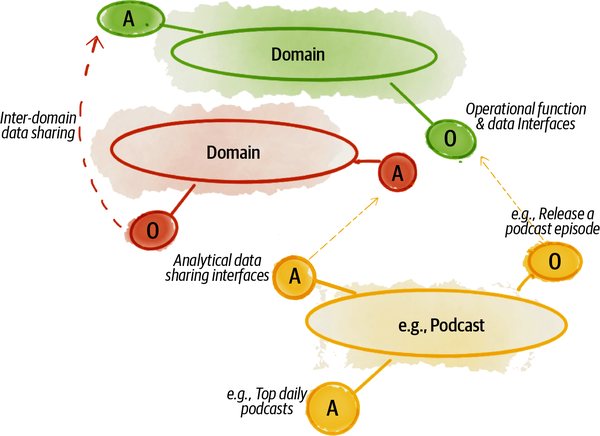Chapter 9. The Logical Architecture
Form ever follows function.
Louis Sullivan
In this chapter I present the logical architecture of data mesh, including its high-level structural components and their relationships.
To arrive at the architecture, Iâll walk you through the data mesh principles and show how each of these principles influences the overall architecture with new components and integrationsâwe follow the function and intention to arrive at the form.
Here is a quick summary of architectural concepts that I will unpack in this chapter, driven by each principle:
- Domain ownership extends domains with analytical data sharing interfaces
-
Domain ownership of data results in a domain-centric organization of analytical data. This means that a domainâs interfaces must extend to sharing its analytical data. Figure 9-1 demonstrates this extension notationally.

Figure 9-1. Domain interfaces extended with analytical data sharing interfaces
- Data as a product introduces a new architecture quantum, aka data quantum
-
Data mesh represents each data product as an architecture quantum. As an architectural quantum, a data product encapsulates all the necessary components needed to implement its usability characteristics and the behavior of securely sharing analytical data.
A data quantum is the foundational unit of a data mesh architecture. It holds the domain-oriented data and ...
Get Data Mesh now with the O’Reilly learning platform.
O’Reilly members experience books, live events, courses curated by job role, and more from O’Reilly and nearly 200 top publishers.

